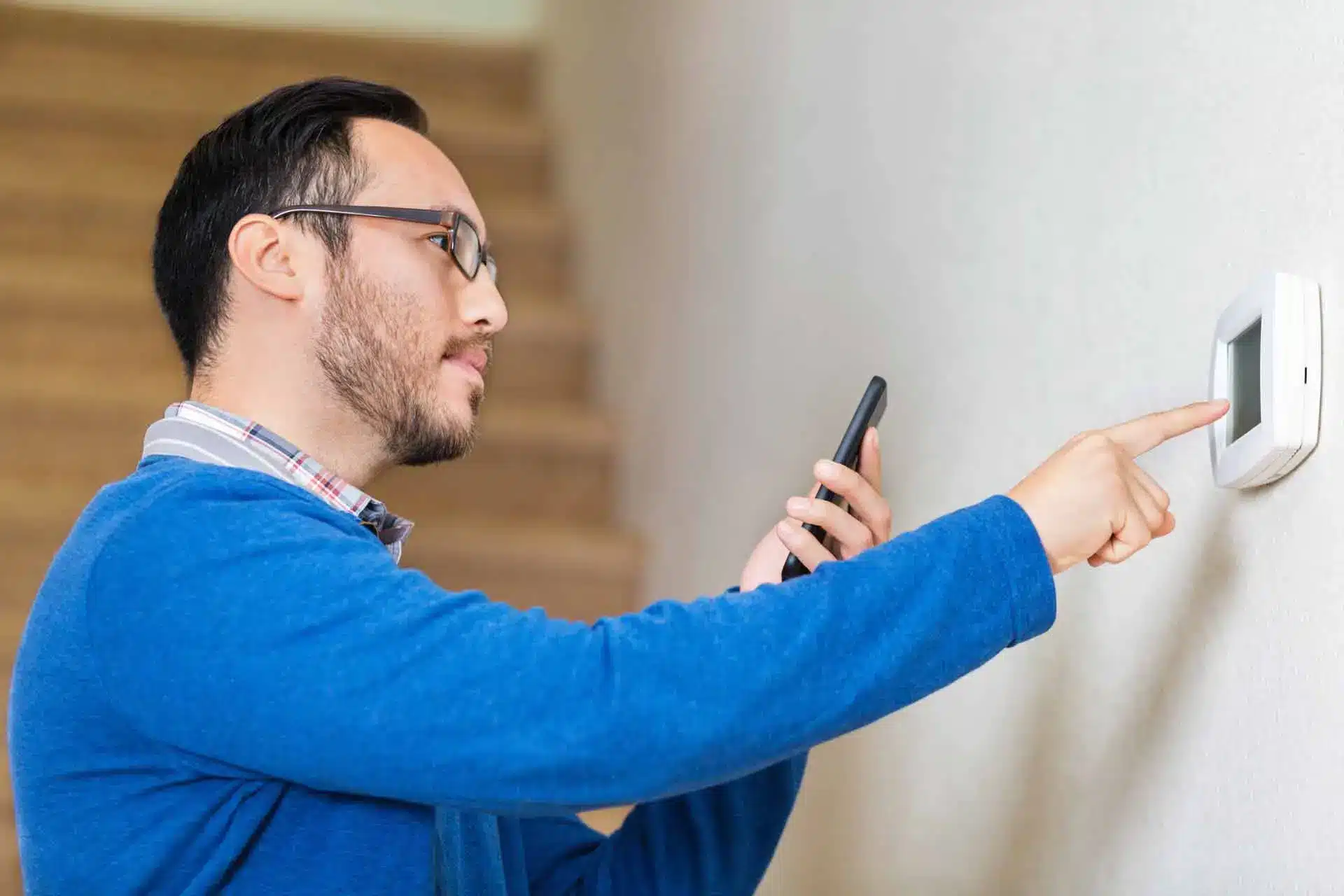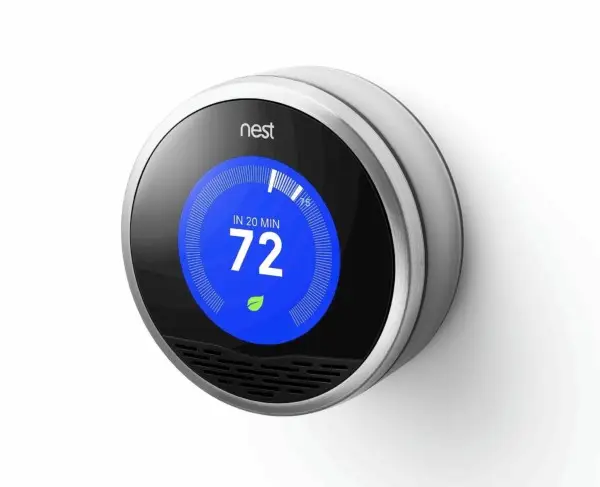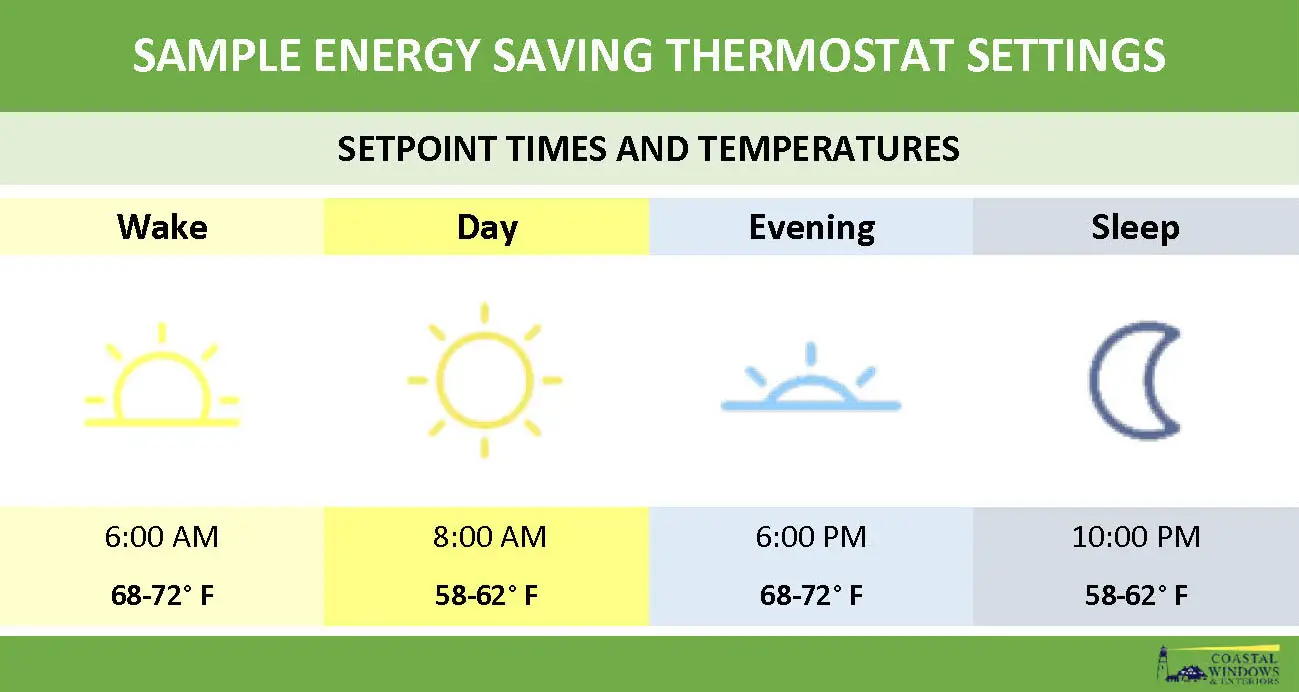
If you’re a homeowner who uses a modern HVAC system, you’re well aware of the importance of your thermostat. It controls the temperature of your home which directly impacts the cost of your utility bills. There are hundreds of thermostats on the market today, and it can be tricky to find the perfect fit for your home.
So, what are thermostat options in 2017, anyway?
Non-Programmable Thermostats
With today’s advanced technology, it’s hard to believe that non-programmable thermostats still exist—but they absolutely do. A non-programmable thermostat regulates room temperature at one desired set point, while a programmable thermostat automatically sets back the temperature of your home based on a predetermined schedule. The downside to non-programmable thermostats is that they are considerably less efficient than modern programmable options.
Newer non-programmable thermostats have an LED display panel and a temperature up and down button. They also have a switch so you can flip from heating to cooling.
Programmable Thermostats
Programmable thermostats are one of the more efficient options on the market. They come in a variety of designs and you can even choose one temperature for the morning and another temperature for night time. Some options even allow you to set temperatures for specific days of the week.
Smart Thermostat
 Smart thermostats make up the latest technology. These thermostats can be controlled with modern smart technology, including smartphones, tablets, or even desktop computers. This gives homeowners complete control over the temperature of their homes while not actually in the home. In addition, there are even models that can sense activity and cell phone location. This thermostat will learn a person’s schedule and adapt the home’s temperature accordingly. The homeowner will be also able to view an online energy usage report.
Smart thermostats make up the latest technology. These thermostats can be controlled with modern smart technology, including smartphones, tablets, or even desktop computers. This gives homeowners complete control over the temperature of their homes while not actually in the home. In addition, there are even models that can sense activity and cell phone location. This thermostat will learn a person’s schedule and adapt the home’s temperature accordingly. The homeowner will be also able to view an online energy usage report.
Touch Screen Thermostat
Touch screen thermostats are another modern option that allows homeowners to control temperature with the touch of a finger. This is typically a programmable thermostat with all of the modern bells and whistles. They are very easy to program and great for those who are looking to upgrade from a run-of-the-mill thermostat.
What is the Best Temperature for Your Thermostat?
Once you have your new thermostat installed, you might be wondering about the best temperature. It’s tempting to crank up the thermostat this time of year at the highest setting possible, but this will result in a drastic spike in energy bills.
The best strategy is to keep your home between 58 and 62 degrees during the night and while you’re away from home. This ensures that you’re conserving energy and not needlessly blasting your HVAC when you’re not even home to enjoy the warmth.

Worried that the house will feel too cold when you get home from work? Set your thermostat so that your home starts heating up shortly before you get home. Make last minute dinner plans and therefore you won’t be going home as planned? For those with a smart thermostat, you can access your thermostat remotely and delay your home heating up until later in the evening. During the day, setting the temperature between 68 and 72 degrees will keep most people comfortable. To save on energy costs, try and keep your thermostat set lower in the winter and higher in the summer.
In order to get the most out of your thermostat, it of course helps to also have energy efficient windows and doors installed in your home. New replacement windows can help homeowners save considerably on their home energy bills.
If you need more insight on how to keep your home warmer this winter, contact Stephanie today at svanderbilt@mycoastalwindows.com.

